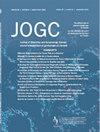The Effect of Yoga Therapy in Premenstrual Syndrome: A Systematic Review and Meta-Analysis of Randomised Controlled Trials
IF 2
Q2 OBSTETRICS & GYNECOLOGY
引用次数: 0
Abstract
Objective
Up to 80% of women of reproductive age are thought to experience premenstrual stress, which is characterised by physical, psychological, and behavioural changes. Yoga activity lowers harmful inflammatory secretions that provide comfort for premenstrual syndrome (PMS) sufferers.
Data Sources
The following worldwide databases were searched for this systematic review: Scopus, PubMed, Cochrane Library, PEDro, and Google Scholar from inception to August 2022.
Study Selection
A population, intervention, comparison, outcome, and study design framework was used for searching. Population included those with PMS or premenstrual tension syndromes, the intervention included yoga therapy, comparator was with control group, and outcome measures included blood pressure (BP) (systolic BP [SBP], diastolic BP [DBP]) and heart rate (HR).
Data Extraction and Synthesis
To evaluate the study, we employed the methodological index for randomised controlled trials. Fixed effects meta-analysis and qualitative synthesis were conducted. A total of 14 studies out of 224 were included. The main outcome measures included in this review were SBP, DBP, HR, and Moos Menstrual Distress Questionnaire. For the meta-analysis, 7 studies were considered. Three studies contributed data of SBP (mean difference [MD] –0.30; 95% CI –2.29 to 1.69, heterogenicity [I2] = 96%, P = 0.00001) and DBP (MD –0.25; 95% CI –0.99 to 0.49, I2 = 79%, P = 0.009). HR results from 4 studies were included (MD 0.08; 95% CI –0.83 to 0.99, I2 = 89%, P = 0.00001). A total of 3 studies contributed data of Moos Menstrual Distress Questionnaire (MD 1.50; 95% CI 0.91–2.10, I2 = 92%, P = 0.00001).
Conclusion
Yoga can help people with both medical and psychological conditions including menstrual pain, irregular periods, stress, tension, and anxiety. It has been shown to lessen women's emotional, behavioural, and physical PMS symptoms, which has enhanced their quality of life.
瑜伽疗法对经前综合征的影响:随机对照试验的系统回顾与元分析》。
目的:多达 80% 的育龄妇女被认为经历过经前压力,经前压力的特点是生理、心理和行为的变化。数据来源:本系统性综述检索了以下全球数据库:Scopus、PubMed、Cochrane Library、PEDro 和 Google Scholar(从开始到 2022 年 8 月)。研究选择:采用 PICOS 框架(人群、干预、比较、结果和研究设计)进行检索。研究对象包括经前期综合征或经前期紧张综合征患者,干预措施包括瑜伽疗法,比较对象为对照组,结果测量包括血压(SBP、DBP)和心率(HR)。进行了固定效应荟萃分析和定性综合。共纳入了 224 项研究中的 14 项。本综述的主要结果测量指标为SBP、DBP、HR和Moos经期压力问卷(MMDQ)。3项研究提供了SBP(平均差(MD)=-0.30;95% CI:-2.29至1.69;异质性(I2)=96%;P=0.00001)和DBP(MD=-0.25;95% CI:-0.99至0.49;I2=79%;P=0.009)的数据。纳入了 4 项研究的 HR 结果(MD = 0.08;95% CI:-0.83 至 0.99;I2 = 89%;P = 0.00001)。3 项研究提供了 MMDQ 的数据(MD = 1.50;95% CI:0.91 至 2.10;I2 = 92%;P = 0.00001)。结论:瑜伽可以帮助人们解决医疗和心理问题,包括痛经、月经不调、压力、紧张和焦虑。目的:多达 80% 的育龄妇女被认为经历过经前综合征(PMS),经前综合征的特点是身体、心理和行为的变化。瑜伽活动可减少有害的炎性分泌物,缓解经前综合征症状。数据来源:为进行本系统性综述,我们检索了 Scopus、PubMed、Cochrane Library、PEDro 和 Google Scholar 等全球数据库中从开始到 2022 年 8 月的内容。研究筛选:采用 PICOS 方法(人群、干预、比较、结果和研究设计)进行检索。研究人群包括经前期综合征或经前期紧张症患者,干预措施包括瑜伽疗法,比较组为对照组,结果测量包括血压(收缩压和舒张压)和心率。数据提取与分析:为了评估这项研究,我们采用了随机临床试验的方法学指标。我们进行了固定效应荟萃分析和定性综合分析。在确定的 224 项研究中,共有 14 项被保留下来。综述的主要终点是收缩压和舒张压、心率和 Moos 月经困扰问卷。在荟萃分析中,共纳入了 7 项研究。共有 3 项研究提供了收缩压数据(平均差 [MD] = -0.30;95% CI:-2.29 至 1.69;异质性 [I2] = 96%;P = 0.00001)和舒张压数据(MD = -0.25;95% CI:-0.99 至 0.49;I2 = 79%;P = 0.009)。纳入了 4 项研究的心率数据(DM = 0.08;95% CI:-0.83 至 0.99;I2 = 89%;P = 0.00001)。结论:瑜伽可以帮助有医疗或心理问题的人,包括痛经、月经不调、压力、紧张和焦虑。数据显示,瑜伽能减轻女性经前综合征的情绪、行为和身体症状,从而提高她们的生活质量。
本文章由计算机程序翻译,如有差异,请以英文原文为准。
求助全文
约1分钟内获得全文
求助全文
来源期刊

Journal of obstetrics and gynaecology Canada
OBSTETRICS & GYNECOLOGY-
CiteScore
3.30
自引率
5.60%
发文量
302
审稿时长
32 days
期刊介绍:
Journal of Obstetrics and Gynaecology Canada (JOGC) is Canada"s peer-reviewed journal of obstetrics, gynaecology, and women"s health. Each monthly issue contains original research articles, reviews, case reports, commentaries, and editorials on all aspects of reproductive health. JOGC is the original publication source of evidence-based clinical guidelines, committee opinions, and policy statements that derive from standing or ad hoc committees of the Society of Obstetricians and Gynaecologists of Canada. JOGC is included in the National Library of Medicine"s MEDLINE database, and abstracts from JOGC are accessible on PubMed.
 求助内容:
求助内容: 应助结果提醒方式:
应助结果提醒方式:


